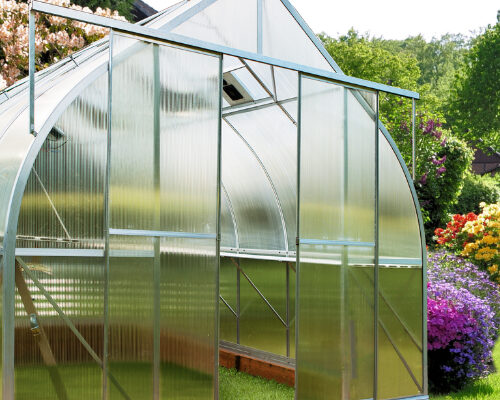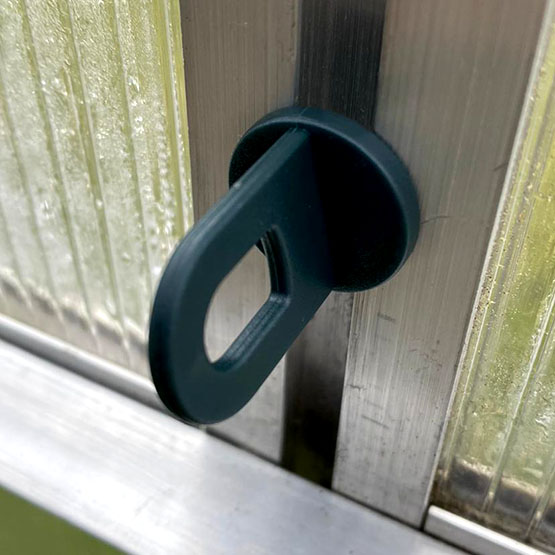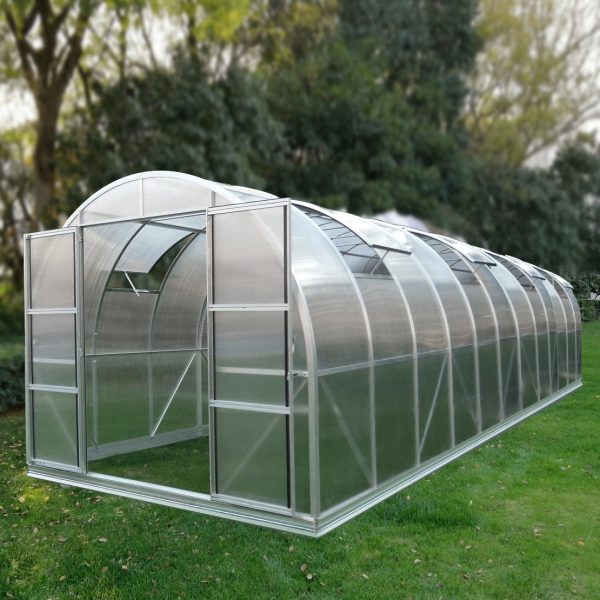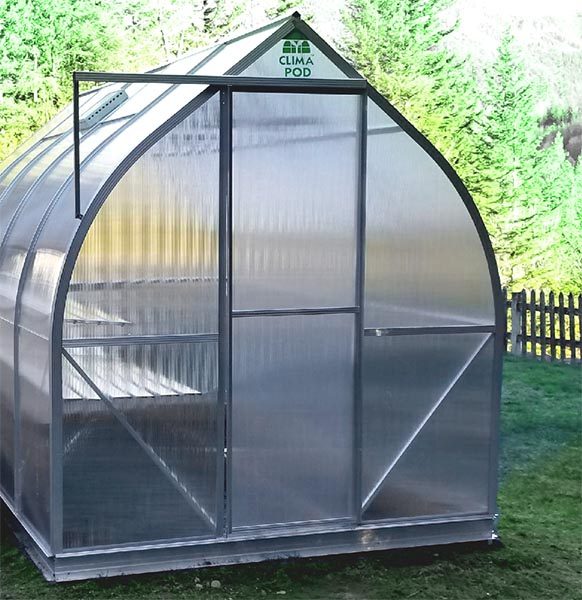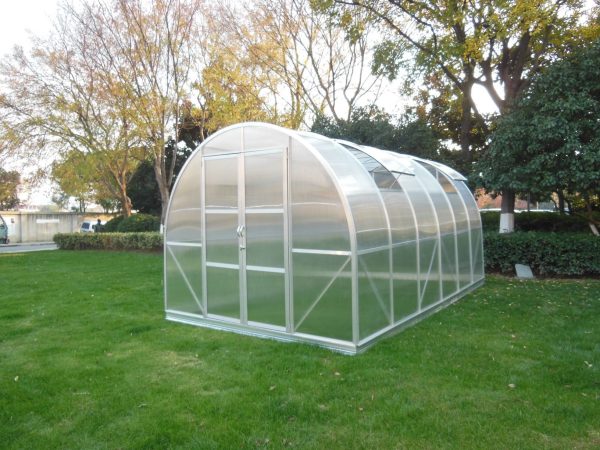When it comes to greenhouses, one is tempted to think they belong to a small niche of people with particular skill sets. Given their benefits, and the fact that they are often used on a commercial scale, or at least by very knowledgeable enthusiasts, it often seems that getting one’s own greenhouse is beyond the abilities of the average Jane or Joe. But setting up a greenhouse might just be a lot easier than you think.
Let’s explore some of the questions you might have if you are trying to figure out how to start a greenhouse.
What Are the Benefits of Using a Greenhouse?
The first logical question is the why. People who are just starting out want to know what benefits to expect from a greenhouse for beginners. There are many different types of greenhouses available, and each of them offers different levels of functionality. But here are some of the benefits that greenhouses offer in general.
First and foremost, using a greenhouse provides your plants with protection against the elements. This gives you better yields and helps you ensure that seedlings and young, vulnerable plants have a better chance of survival. Greenhouses also offer better protection against pests. Provided, of course, that the greenhouse is of good quality and is properly installed.
Secondly, the controlled environment provided by greenhouses opens up more possibilities. One thing is that you get the ability to extend your gardening season beyond the normal period allowed by your region’s climate. In many cases, this could mean being able to grow your plants all year round. This control over growing conditions means you will also be able to grow plants that are not native to your region. You can build a collection of exotic plants that you can be proud of.
What are the Main Types of Greenhouses?
Greenhouses come in many different shapes and sizes. As you do your research, you will come across variations going under different names. Lean-to, (un)even span, pipe metal frame, Gothic Arch, wooden frame, plastic, Quonset, and many others. Whatever the structure or design you settle on, you want to make sure your greenhouse is made of high-quality materials that will withstand the challenges the environment is bound to throw at them.
Climapod greenhouses for example, are made of heavy duty aluminum framing instead of wood, which rots over time, or other alloys that are susceptible to corrosion and rust. The greenhouses have polycarbonate panels instead of glass. These are sturdier and virtually unbreakable, making them safer and longer-lasting.
This superior build quality is crucial because it means your greenhouse can withstand high-velocity winds, will have greater load capacity for snow, and will cost you less in maintenance in the long-run.
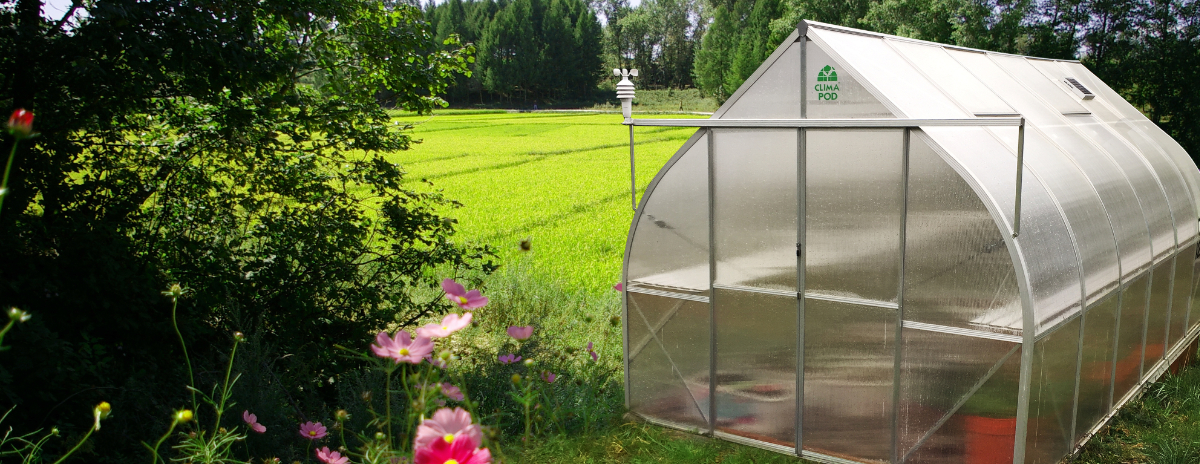
Should You Build or Buy?
There are two main considerations here, and those are cost and quality. On both fronts, in the majority of cases, you will be better off buying a kit from a manufacturer. WIth the economies of scale, the machinery, and the engineering expertise that manufacturers have, they are able to bring the cost of building the greenhouses, compared to an individual going it alone.
However, it is entirely possible that you have the engineering skills and the technical know-how to go about the project. By choosing different types of materials, you may actually be able to lower the cost of building your greenhouse. This works well if you’re experienced and absolutely know what you are doing.
For the majority of cases however, it is a safer bet to buy. ClimaPod greenhouses come with a ten year warranty, and extensive customer support from the time you make your first inquiry, to buying the kit, setting it up, and starting to grow your plants.
When is the Best Time to Set Up a Greenhouse?
Individual experiences may vary, so it is difficult to provide a definitive answer on when exactly is the optimum time to set up your greenhouse. The instinctive answer is spring. The weather is good for outdoor DIY projects, winter has just ended, so planting season is just starting, and you will be in time to start your own.
However, this is also high-season for greenhouses in general. Suppliers may be inundated with orders, prices might go up, and you might not get the level of customer support that you need. This is especially true if you are a beginner.
You might want to consider starting your project in winter or autumn. You are more likely to get special offers or discounts, or prices overall may be lower. The area of installation will not have plants in it and, come spring, your greenhouse will be ready, with the ground already warming up as winter comes to an end. This way, you get a headstart before everyone jumps into the fray.
How to Set up a Greenhouse: What to Consider
Size
The size of your greenhouse is probably one of the first considerations you’ll encounter. This depends on what you are growing, how much of it, and what real estate is available for the greenhouse on your property. Luckily, the size of the greenhouse is something that you can adjust later if you start to run out of space. However, it is a good idea to get the right width right at the outset. Extending a greenhouse lengthwise is pretty uncomplicated. If you get the width wrong however, it becomes considerably more difficult to change later.
Location
Choosing the spot to set up your greenhouse is another crucial step in getting it right. You’ll want to think about exposure to sunlight. How do shadows of large objects, like buildings affect the greenhouse? Bear in mind seasonal sunlight as well as in many regions, this varies considerably.
If you live in an area where strong winds may be an issue, you can factor this in as well and ensure your greenhouse is properly shielded – with a fence, for example.
Temperature control
Regulating the environment inside the greenhouse is the most crucial factor in the success of your project. In fact, that’s the whole point of a greenhouse. You cannot effectively control the growing environment without a functional temperature control system. Ideally, this should include some sort of alarm system to alert you to temperature changes beyond thresholds you set. You can then adjust it in any number of ways, using different types of heaters. There are heaters that use fuel, steam, electricity and other means.
Light
Another thing you want to control is the light. Beyond the considerations you make when first positioning the greenhouse, you can also consider how you will protect your plants from too much sunlight. In summer for example. There are various types of shading available, made from different materials including cloth, wood, plastic, and others.
Watering
You can choose from different irrigation techniques depending on what plants you have and the size of your greenhouse. You can opt for hand watering, which needs no introduction, or automated systems like drip irrigation.
Air Circulation & Ventilation
Special attention must also be paid to air circulation in your structure. You can have vents that let air flow through the greenhouse, fans to help things along, and windows that you can open and close whenever appropriate.
What to Plant in a Greenhouse
Once your greenhouse is all set, it’s time for the fun part. You now have to decide what to put in it. This part is up to you. You can go with fruits and vegetables at first, and branch out to more exotic plants as you become more confident and gain more experience. So your first greenhouse might start with things like lettuce, tomatoes, mushrooms, before you graduate to orchids and the like. However, the choice is entirely yours. You may decide to challenge yourself from the very beginning.
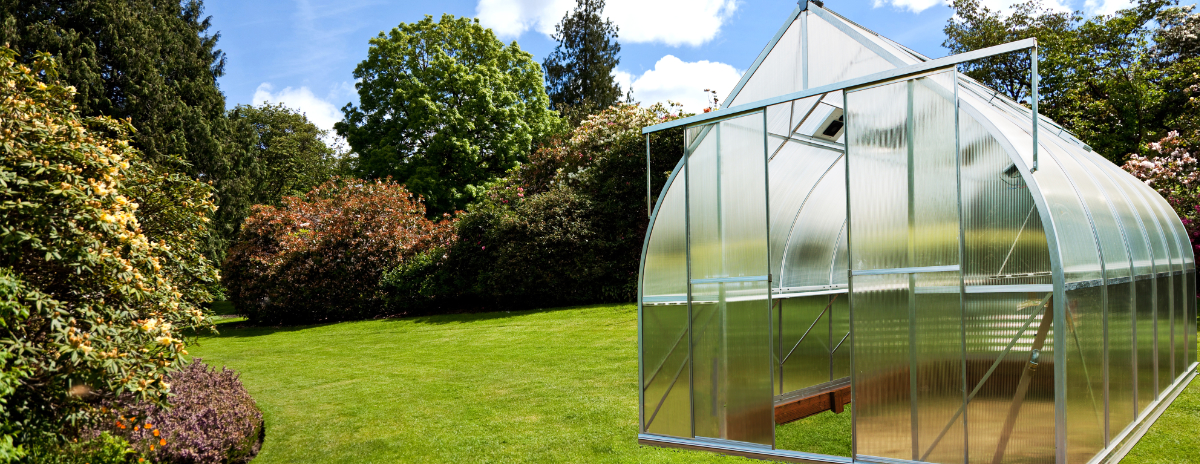
Common Mistakes in Greenhouse Gardening
There are a number of pitfalls that first-timers might find themselves in. You can save yourself a few headaches by remembering some of the common ones.
Ensure you always monitor the temperature on a daily basis using a combination of heating, ventilation, and shading. You also want to monitor and control humidity.
Properly locate your greenhouse so that you don’t have too much difficulty dealing with things like shade from buildings, encroaching underground roots, falling leaves or fruits from nearby trees, and elements like the wind and snow.
Finally, make sure you choose the appropriate plants for the conditions in which you plan to grow them. Monitor watering schedules, light, temperature, and other environmental factors as appropriate.
Conclusion
Setting up your first greenhouse can seem like a daunting task at first. But if you get the right materials, with the right experts to help you put it all together, it can be a fun adventure that ends with you enjoying your bountiful harvests year after year. For the more adventurous, you could even try experimenting with rare or otherwise special plants. With the control that greenhouses give you, you could be doing this throughout the year!

